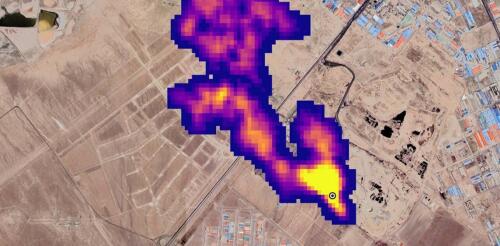Greenhouse gas emissions (GHG)
Food’s role in climate change has emerged as one of the defining challenges of our time. The journey of a steak, fruit or salad from the vast expanses of agricultural lands to the plates on our tables leaves a significant footprint on the environment. As earth, climate and atmospheric scientists, we track global greenhouse gas emissions and just published the most comprehensive assessment yet of a powerful greenhouse gas from food production: nitrous oxide, or N₂O. After carbon dioxide and methane, N₂O is the most consequential greenhouse gas humans are releasing into the atmosphere. While there is less N₂O than carbon dioxide in the atmosphere, it is 300 times more powerful at warming the planet, and it remains in the atmosphere, holding in heat, for over a century. Today, atmospheric N₂O levels are about 25% higher than before the Industrial Revolution, and they’re still rising at an accelerating rate....
Imagine a future with nearly silent air taxis flying above traffic jams and navigating between skyscrapers and suburban droneports. Transportation arrives at the touch of your smartphone and with minimal environmental impact. This isn’t just science fiction. United Airlines has plans for these futuristic electric air taxis in Chicago and New York. The U.S. military is already experimenting with them. And one company has a contract to launch an air taxi service in Dubai as early as 2025. Another company hopes to defy expectations and fly participants at the 2024 Paris Olympics. Backed by billions of dollars in venture capital and established aerospace giants that include Boeing and Airbus, startups across the world such as Joby, Archer, Wisk and Lilium are spearheading this technological revolution, developing electric vertical takeoff and landing (eVTOL) aircraft that could transform the way we travel. Electric aviation promises to alleviate urban congestion, open up rur...
Methane, a potent greenhouse gas, is being released from landfills and oil and gas operations around the world in far larger amounts than governments realized, recent airborne and satellite surveys show. That’s a problem for the climate as well as human health. It’s also why the U.S. government has been tightening regulations on methane leaks and wasteful venting, most recently from oil and gas wells on public lands. The good news is that many of those leaks can be fixed – if they’re spotted quickly. Riley Duren, a research scientist at the University of Arizona and former NASA engineer and scientist, leads Carbon Mapper, a nonprofit that is planning a constellation of methane-monitoring satellites. Its first satellite, a partnership with NASA’s Jet Propulsion Laboratory and the Earth-imaging company Planet Labs, launches in 2024. Duren explained how new satellites are changing companies’ and governments’ ability to find and stop methan...
The historic Paris climate agreement started a mantra from developing countries: “1.5 to stay alive.” It refers to the international aim to keep global warming under 1.5 degrees Celsius (2.8 Fahrenheit) compared with preindustrial times. But the world will likely pass that threshold within a decade, and global warming is showing little sign of slowing. The world is already facing natural disasters of epic proportions as temperatures rise. Heat records are routinely broken. Wildfire seasons are more extreme. Hurricane strength is increasing. Sea level rise is slowly submerging small island nations and coastal areas. The only known method able to quickly arrest this temperature rise is climate engineering. (It’s sometimes called geoengineering, sunlight reduction methods or solar climate intervention.) This is a set of proposed actions to deliberately alter the climate. These actions include mimicking the cooling effects of large volcanic eruptions by putting la...
Earth Day is April 22, and climate activists around the world are planning rallies and other events to draw attention to the growing threats posed by climate change. Many of these demonstrations will focus on what humanity can do to stop fueling the damage. But while activists are amplifying the dire findings from scientists, you’ll likely see fossil fuel supporters attacking them on social media and TV. It’s easy to get caught up in the myths about climate activism, particularly in today’s polarized political environment. So, let’s take a moment to explore the truth about three of the big myths being told about climate activism and the climate movement today. Myth 1: Climate activists are just young people The media tends to focus most of its attention on young people in the climate movement, including those inspired by Greta Thunberg’s school strikes for climate, the international Fridays for Future, or the Sunrise Movement, which focuses on U....




